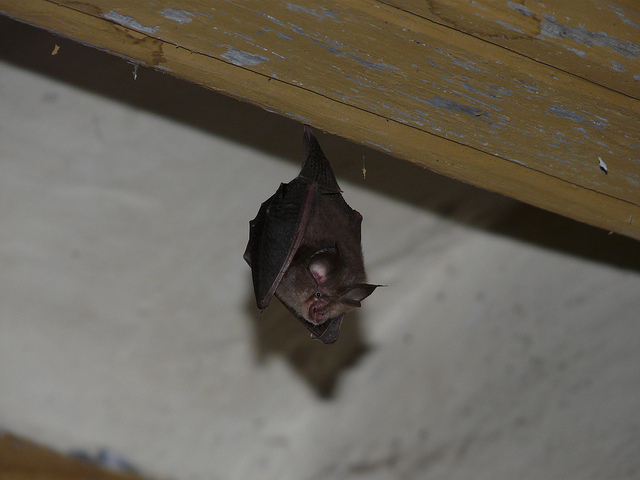The Mediterranean Horseshoe Bat (Rhinolophus euryale) is a bat species that, which the name implies, occurs in the Mediterranean region and Balkan peninsula. Unfortunately, the populations of these bats are declining. Conservation efforts have so far focused on protecting the area where the bats occur/hunt. However, Aitor and his colleges say that that will not be enough. They’ve analyzed bat droppings and conclude that it is important to also include the surrounding “non-hunting” sites if we want to protect these bats.

Mediterranean Horseshoe Bat. Picture by Medi Ambient. Generalitat de Catalunya.
The Mediterranean Horseshoe Bat eats moths
These bats eat moths, and lots of them. Their diet consists for about 85% of moths. Well? So what, you might say. The reason that this is important is because moths are holometabolic insects, they have an egg, a larval stage (the caterpillar), a pupal stage and an adult stage. Bats only eat the adults. The important thing here is, as the authors discuss, that caterpillars may live in entirely different habitats than the adults do. Which means that if the area where these caterpillars live is not protected, the bats might run out of food. Take a look at the picture below. The green area is where the bats live and hunt and is designated a protected area. Some moths live their entire life there (the green ones). However, other moths grow as caterpillars outside this protected area (in the red area) and fly as adults into the protected area (the red moths). Both moths serve as a nice batsnack. But do they equally contribute to the bat’s food supply? And is their contribution equal throughout the year?

Extracting DNA from bat droppings to see what they eat.
Something I did not know was that you can actually buy specialized kits to extract DNA from poop. The authors used this kit to extract DNA from the droppings and then used this to identify which moths were eaten by the bats. This shows which moths are eaten by a certain percentage of bats, as in: “60% of the bats eat moth species 1”. They did this 3 times during the year, in May (before the bats breed), in July (during the breeding season) and in September (after the breeding season). They found that which moths are eaten by most bats varies throughout the season. In the figure below you see the 3 moth species that were eaten by most bats for each of the 3 times measured.

As you can see, 9 different species. Which means that different moths are important for bat survival in different seasons. But that still doesn’t tell us whether the caterpillars of these moths live in or outside of the protected bat area. So they looked where the caterpillars of all these different moths live and looked whether the caterpillars lived inside the protected area or outside. They found that in May and July about 70-85% of the bats preyed both on moths that live their entire life in the protected area and on moths that come from unprotected areas. However, in September, only 42% of the bats still preyed on moths from within the protected area but 100% of the bats preyed on moths that came from unprotected areas! The importance of this finding is that bats rely on moths that originate from both within the protected area and outside the protected area, and that their dependence on moths from outside the protected area increases later in the year (September).
So if we want to protect the Mediterranean Horseshoe Bat, we need widen our perspective and include the areas where their food comes from. This is likely true for many more species that are the target of conservation efforts and we would be wise to take this into account in future conservation efforts.
From Science Explained.
Reference:
Aitor Arrizabalaga-Escudero, Inazio Garin, Juan Luis García-Mudarra, Antton Alberdi, Joxerra Aihartza, Urtzi Goiti. (2015) Trophic requirements beyond foraging habitats: The importance of prey source habitats in bat conservation, Biological Conservation, Volume 191, Pages 512-519, ISSN 0006-3207, http://dx.doi.org/10.1016/j.biocon.2015.07.043.




Comments